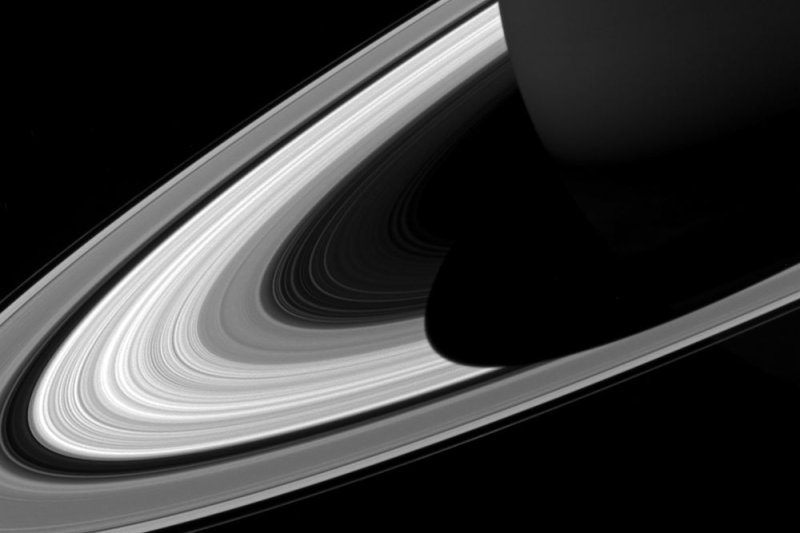The projection of Saturn's shadow on the rings grows shorter as Saturn's season advances toward northern summer, thanks to the planet's permanent tilt as it orbits the sun. Photo by NASA/UPI |
License Photo
Jan. 17 (UPI) -- Saturn's rings are surprisingly young, according to a new survey of the gravity data captured by the Cassini probe during its final flyby.
In September 2017, as Cassini conducted its final flybys and plunged into Saturn's atmosphere, the probe's trajectory was influenced by the gravitational pull of Saturn's rings. Scientists used Cassini's trajectory to calculate the rings' gravity, which allowed scientists to estimate the rings' mass.
Saturn's rings boast a mass equivalent to 40 percent of the mass of Saturn's moon Mimas, which is 2,000 times smaller than Earth's moon. The rings' mass suggests they are relatively young, having formed between 10 million and 100 million years ago.
Previous attempts to deduce the gravitational pull of Saturn's rings from Cassini's trajectory didn't match the predictions of planetary models, but researchers realized strong winds originating deep within Saturn's' atmosphere had also influenced the probe's path.
When scientists accounted for the winds, they were able to build a more accurate estimate of the rings' gravitational pull.
"The first time I looked at the data I didn't believe it, because I trusted our models and it took a while to sink in that there was some effect that changed the gravity field that we had not considered," Burkhard Militzer, a professor of earth and planetary science at the University of California, Berkeley, said in a news release. "That turned out to be massive flows in the atmosphere at least 9,000 kilometers deep around the equatorial region. We thought preliminarily that these clouds were like clouds on Earth, which are confined to a thin layer and contain almost no mass. But on Saturn they are really massive."
The new age estimate for Saturn's rings is based on previous models designed to simulate the evolution of Saturn's rings. Because Saturn's rings are made of ice, they started out bright. Over time, they accumulated interplanetary debris and became darker -- and heavier.
Their relatively small mass suggests the rings haven't been around for that long. Researchers shared their conclusion in a new paper published this week in the journal Science.
Gravity measurements performed during Cassini's final passes also allowed scientists to gain new insights into Saturn's interior structures. Researchers were able to determine that the inner layers of Saturn's thick gaseous atmosphere rotate more slowly than the outer layers.
Scientists were also able to estimate the mass of Saturn's rocky core. According to the new data, the core features a mass of roughly 15 to 18 Earth masses.















